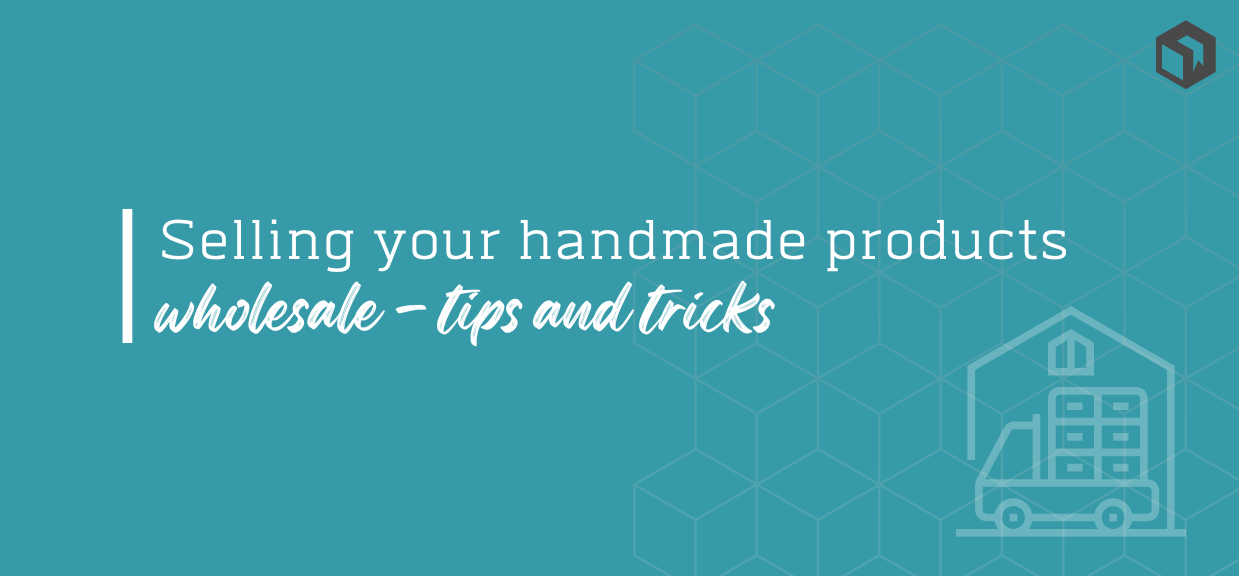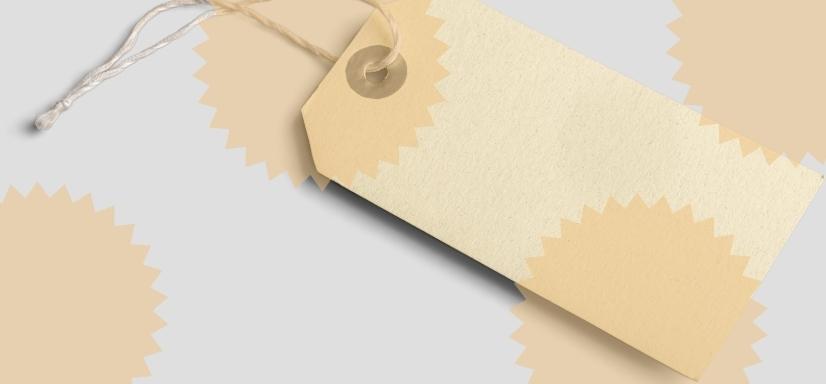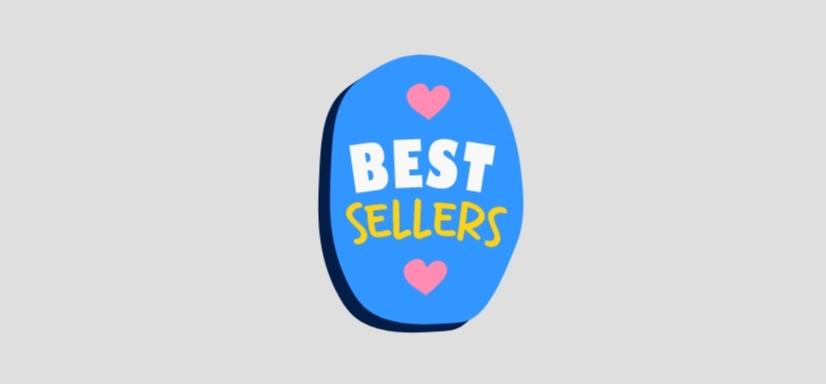Selling Handmade Items Wholesale - Tips & Tricks
Thinking of selling your handmade items wholesale? This guide will take you through everything you need to know to get started.

So you’ve mastered the art of making your products, selling and shipping them - and you’re now ready to think about selling your handmade products wholesale - congratulations! 🎉
The decision to sell your craft products wholesale is a big one, not only because it can rapidly increase your business’s success, but also because it means you need to get super organized.
A plan is a must before you start selling handmade items wholesale - you don’t want to drop the ball when your customer could potentially produce thousands in revenue for you.
To help you start selling your handmade products the right way, we’ve put together all our top tips you should know before selling your handmade products wholesale.
Ready to take your Etsy store to the next level?
Discover how Craftybase is the Etsy inventory software you've been missing out on: track raw materials and product stock, COGS, pricing and much more. It's your new production central.
Is wholesale a good option for my handmade business?

Selling handmade items wholesale is an attractive option for most - after all, you can sell a bulk order of the same product(s) to the same customer, and only have to pack and ship it once.
But it’s important to note that wholesale isn’t right for every handmade business.
Selling handmade products wholesale is usually best for craft businesses that:
-
Have already experienced some success serving everyday customers
-
Have been in business long enough to know what products are their best sellers
-
Have SOPs (standard operating procedures) for how to manufacture, pack, and ship their goods, so it’s the same process every time
Know their base manufacturing costs and profit margins
-
Are ready to expand their business and reach more customers
-
Are happy to allow another brand to sell their products
Another option: selling on consignment
If you don’t meet all of the above criteria, consider selling your handmade products on consignment first. Selling on consignment is essentially the bunny slope for selling wholesale - you rent a space (often a shelf or two) in retail stores for a small monthly fee and/or a small percentage of each sale.
This allows you to work with smaller volumes (which you’re in control of), and you can take more time to work out wholesale pricing. See our article about 7 ways to make your consignment strategy a success →
How to Be Successful Selling Handmade Wholesale
Be intentional when you set your wholesale prices

We talk a lot about the importance of knowing your profit margins and costs here at Craftybase because they’re so essential to doing business, but if you want to test how accurate your pricing is, sell wholesale.
Without the right planning in place–and the right calculations–your first few wholesale customers may teach you some costly lessons. Literally.
There are numerous pricing formulas you can choose to use to determine your wholesale pricing; the key is to find one that works for you and use it religiously. It must take into account all your expenses and labor.
Learn more about how to calculate your craft labor costs →
You cannot afford to overlook an expense, or you could potentially find yourself out of pocket if you make a big mistake or fail to review your pricing when the cost of materials increases.
As a general rule of thumb, your wholesale price should be at least twice your break-even price. Here’s how to work out your break-even price:
Supplies + labor + overheads = break-even price
Once you know your break-even price, you can double it and then consider increasing it further, if possible.
Optimize your processes

Our craft businesses have heart - we love what we do and what we make, and so do our customers. So, it’s no surprise that most of us hate the idea of turning our business into an assembly line.
But (here comes the painful part), big businesses use assembly lines because they work. They do the same thing in the same steps and get the same result. When you start selling your products wholesale, you’ve got to lean into the assembly line mentality.
Your business can only grow (and only be efficient) when you have SOPs (standard operating procedures) that can be replicated and followed again and again. When it comes to selling physical products, there aren’t any shortcuts besides optimizing what you do and hiring others who can replicate what you do.
Now is a good time to start making notes on how long things take and how much time you need for delays so you can be realistic when taking orders and setting delivery timeframes. For example, if you know you can make your product in 15 minutes when you’re in the zone, but in 30 minutes when you’re tired, budget 30 minutes for all your orders.
The worst thing that can happen is you’ll be ahead of schedule - which is great because you can underpromise and overdeliver when you’re in the zone, and meet expectations when you’re not.
If you haven’t yet created SOPs, see our guide: How to Create SOPs for Your Handmade Business.
Identify your best sellers

This may surprise you, but it’s not always a good idea to offer your entire product line to retailers. Why? Because there may be some products that simply don’t offer enough of a profit margin for you to make enough money from them for it to be worth it. Sometimes, it’s not enough for a product to simply be profitable.
Think about it this way: If you make a $20 profit margin making a necklace that takes 20 minutes to make, and a $20 profit on a ring that takes you an hour to make, which is more profitable? Even with all the labor accounted for in your pricing, selling 12 necklaces will be less work for you than 12 rings. The necklaces will take you 4 hours, and the rings will take you 12 - that’s a significant time investment. In a case like this, it may not make sense to you to sell the rings, especially if the necklaces sell just as well or better.
When you decide what products to sell, ask yourself these questions for each product:
-
Is it in my top 5/10/20 best-selling products?
-
How long does this take me to make?
-
Can I easily teach someone else to manufacture this product following my SOPs?
-
Is it easy to pack and ship without getting damaged? (If you get a lot of breakages, it’s not going to be a good one to sell to wholesalers)
-
Do (or can I) make a good profit from this product, even when selling wholesale?
If you’re unsure what sells best, Craftybase can generate reports showing you your best sellers and which products have the highest profit margins. Find out more here.
Pitch potential wholesale companies

If you stumbled across this article after a retailer reached out to you about selling your merchandise, lucky you! You can use all the advice in this article to create a great business relationship with them. That said, most craft businesses decide to start selling wholesale first and then need to go out and find potential customers, so let’s take a closer look at the process:
-
Start Googling potential vendors- start researching stores you’d like to sell your products. They may be stores you’ve admired for a long time, local stores, or simply those you stumble across and find share the same values and aesthetic as you. Make sure your products would sit well with their other products - aesthetically and monetarily.
-
Vet potential customers- you can’t really stop people from buying a product from you online, but you_can_be choosey about your wholesale customers. Remember that these businesses will sell your brand, so you don’t want to partner with anyone who doesn’t have the same values as you.
-
Prepare your pitch - don’t worry; you don’t need to prepare a PowerPoint presentation here. Simply decide how you plan to reach out to each potential customer and introduce yourself and your products - make sure you get to the point quickly, or you risk them tuning you out (or deleting your email).
Something like the following template works well: [greeting] > [who you are and why you’re reaching out to them_specifically_(i.e. what you like about their store)] > [what you have to offer and why you think your products will sell well in their store].
It’s a good idea to prepare a one- or two-page document displaying your products, as well as an about page that tells the story of your brand (_now_you can talk about how you got started!) and details about how to order. Some hand makers prepare a booklet with all the products they offer and an order form, so you can do that if you don’t want to set up a portal exclusively for wholesalers online.
- They buy from you or move on - this is where your potential customers will either nod and buy from you or tell you your products aren’t a good fit, or they aren’t in a position to buy from you for XYZ reason.
Consider online wholesale marketplaces
If you’ve shown any interest in selling craft items, you’ve likely seen ads for online wholesale marketplaces like Faire. Online wholesale marketplaces present new opportunities to reach businesses you may not have considered working with before.
👉 Check out our free Faire commission and payout calculator →
On most of these marketplaces, you create a store or add your products as you would on a consumer marketplace, and potential retailers can browse the products on the marketplace to find those they want to stock. If they decide they want to buy your products, they’ll reach out to you and you can vet them as we discussed in the section above.
👉 Can’t decide which wholesale marketplace you should use? See our detailed comparison between Faire wholesale and Tundra →
Moving into wholesale takes knowing your products, processes, and pricing inside-out, so if you know you need to up-level your systems before you start seriously growing your business, try Craftybase now with our 14-day card-free free trial.
